Be Nosey: Discover the Scents of Paris
Close your eyes for a moment. Whether you are living in Paris, visiting Paris, or dreaming of Paris, what quintessential smells come to mind?
A hint of Chanel No. 5 on Rue Montaigne. The black currant, plum, and earth of a glass of good Bordeaux. Seductive aromas that linger just outside your favorite boulangerie. The first narcissus and lilac of spring or the perfume of roses in the Parc de Bagatelle in June.
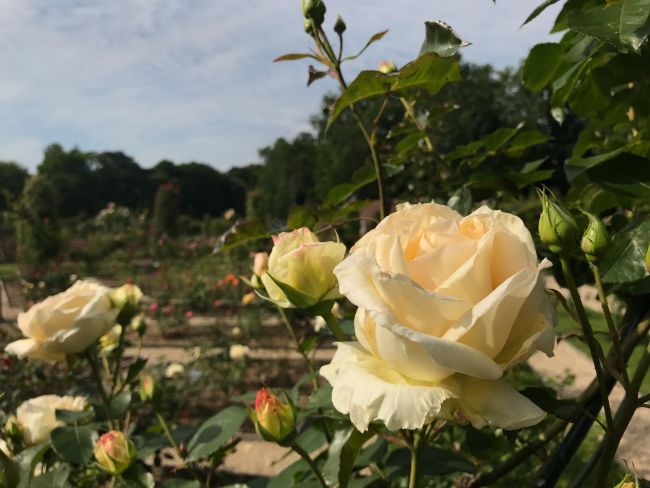
The scent of roses in the Jardin de Bagatelle. © Meredith Mullins
The pungent stink of a ripe Époisses fromage (stink in a good way, of course). The undeniable presence of someone cutting into an andouillette sausage no matter how far away from you they are in the restaurant.
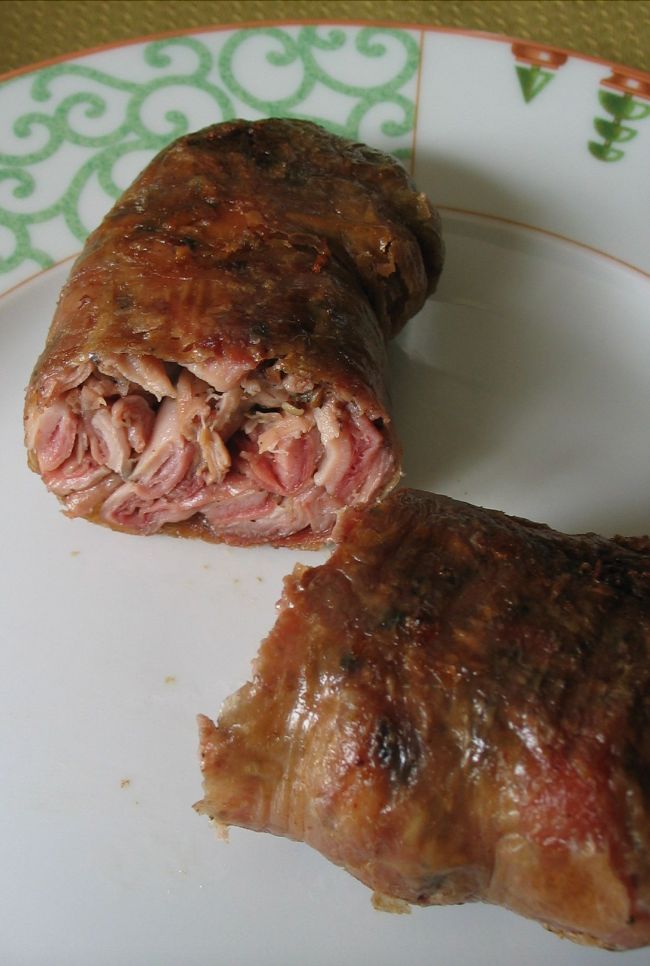
Who can resist a good andouillette? © Docteur Cosmos via Wikipedia Commons.
The ubiquitous scent of pee on the lower quais, in alleyways, and in less-frequented metro tunnels. And, not to be forgotten, the smell of weeks’ old garbage in the streets as a result of yet another strike.
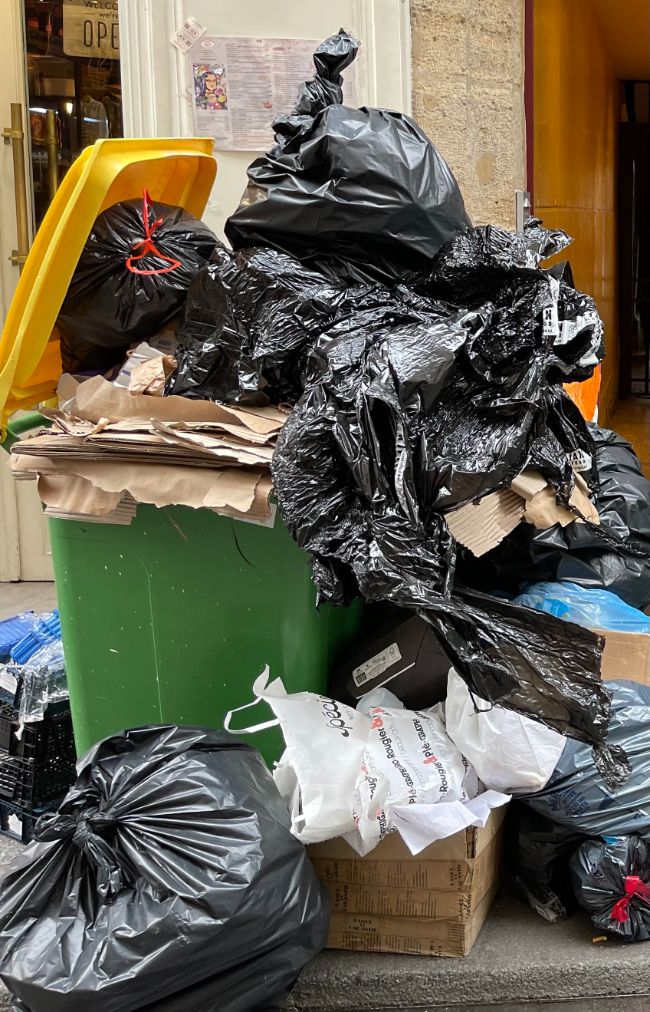
Garbage garbage everywhere . . . awakening the olfactory nerve. © Meredith Mullins
Paris is well known for its sights and sites — from the Eiffel Tower to the Arc de Triomphe to Haute Couture to the Seine and its varied bridges. But an essence of Paris also exists in scents of the city. Focusing for a moment on just one of our treasured senses can expand our experience. The sense of smell is a powerful force, especially in a city with such rich sensory stimuli.

The nose knows. © Meredith Mullins
Your nose (with its olfactory nerve) takes in the molecules near you and transmits them to the brain. From there, your library of scents that you’ve been building since childhood springs into action. We all have smells that we love or hate — smells that remind us of things from the past or are just a reflection of personal taste.
In exploring Paris via the nose, let’s take a quick look at three areas of heightened smells — perfume, wine, and cheese.
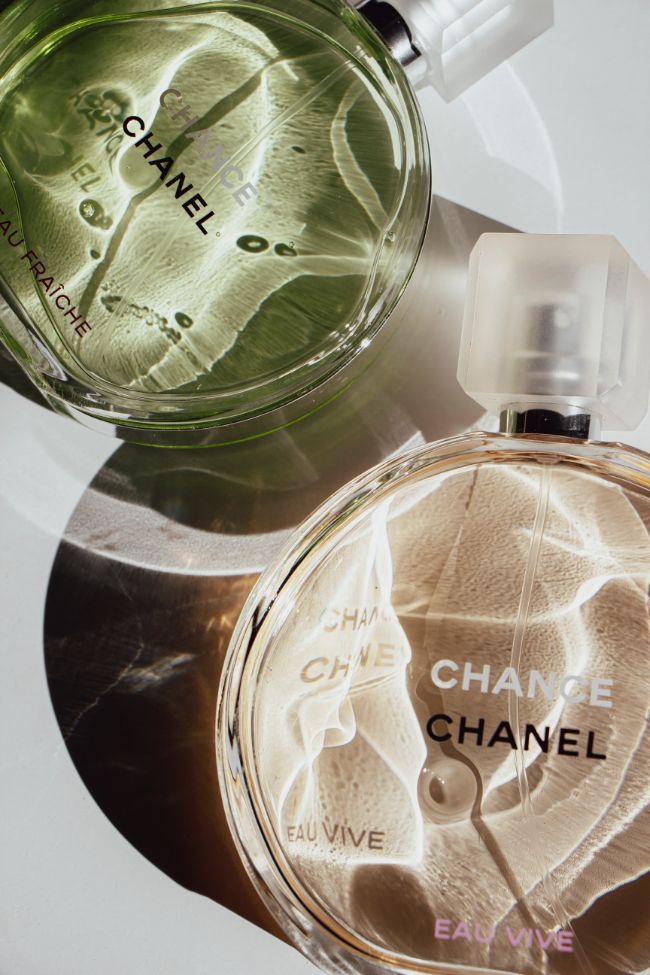
Paris is famous for its luxury perfumes, from Chanel to Dior to Guerlain. (Photo courtesy of Yulia H.)
A Perfume Legacy
France is well known for its long tradition of luxury perfumes.
After learning about perfume and fine tuning my nose at the Candora Atelier in the Marais, I was reawakened to the wonders of the olfactory.
At the Candora workshop, you learn the history of perfume as well as the art of perfume creation.

The 1925 exhibition of perfumes at the Grand Palais. (Courtesy of Candora).
More than that, you hone your sense of smell. The workshop leaders provide samples of the basic categories of perfume fragrances to remind your brain’s scent library of common aromas.
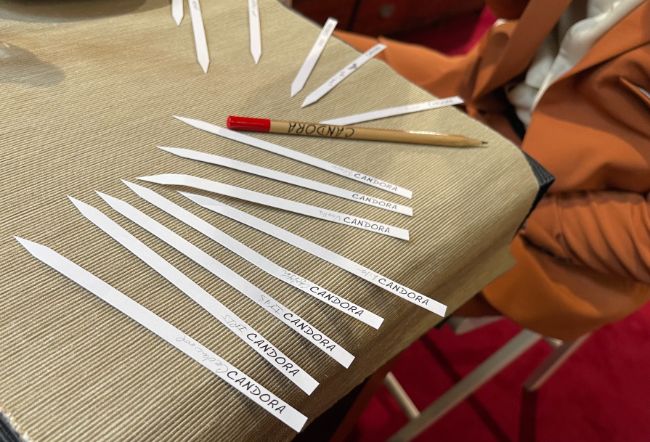
A multitude of unique scents. © Meredith Mullins
At the bottom of their olfactive pyramid, you’ll find spicy, woody and musky fragrances (e.g., vanilla, ginger, saffron, cedar, tobacco, sandalwood, wood fire, and oud). These are the base notes that linger the longest in a perfume (up to 10 hours).
Next, you’ll find the florals (e.g., rose, jasmine, orange blossom, lavender, and lily of the valley). These middle notes last around three–four hours in your scent.
At the top of the pyramid, you’ll find the fruits, with citrus at the apex (e.g., red berries, grapefruit, orange, and yuzu). These top notes last about 30 minutes to one hour.
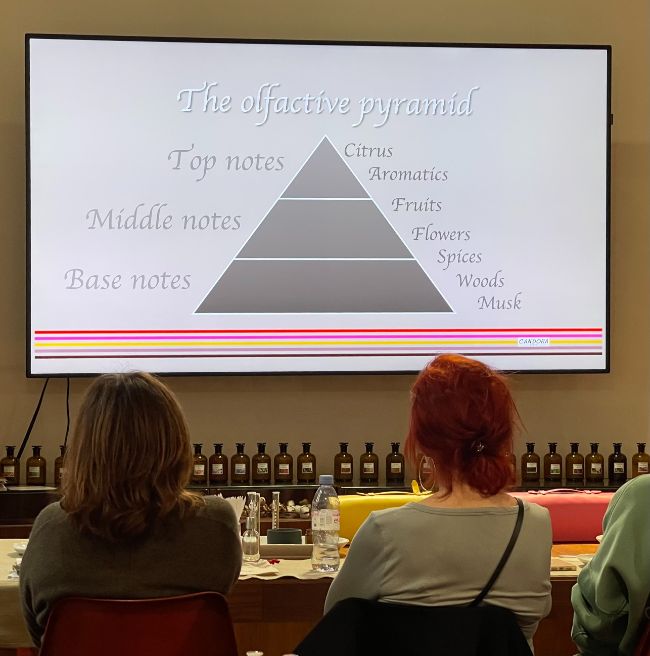
The Olfactive Pyramid. © Meredith Mullins
The combination of fragrances from the olfactive pyramid provides a complex and evolving scent, keeping in mind that YOU are the last ingredient of your perfume.
To keep things simple, the workshop participants are able to select three fragrances that they think will work well together, following the pyramid concept if desired. An expert then advises on how much of each fragrance should go into the final mix.
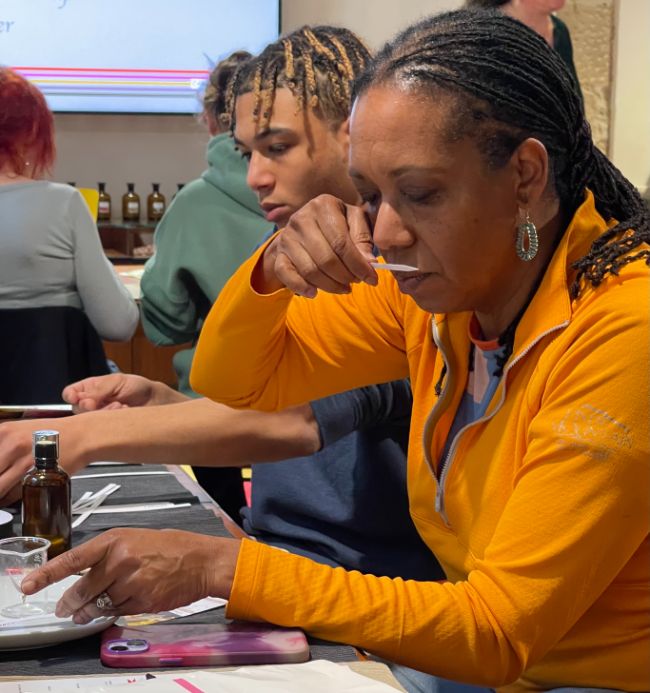
The selection of fragrances is highly personal (and fun!). © Meredith Mullins
Like an ardent scientist, you experiment with combinations using the fragrance samples and then use test tubes to create the final blend. The final perfume goes into a stylish bottle awaiting whatever trendsetting name you choose to give it. The workshop was a nose-opening experience (and my final medley of vanilla, marine and yuzu has stood the test of time).
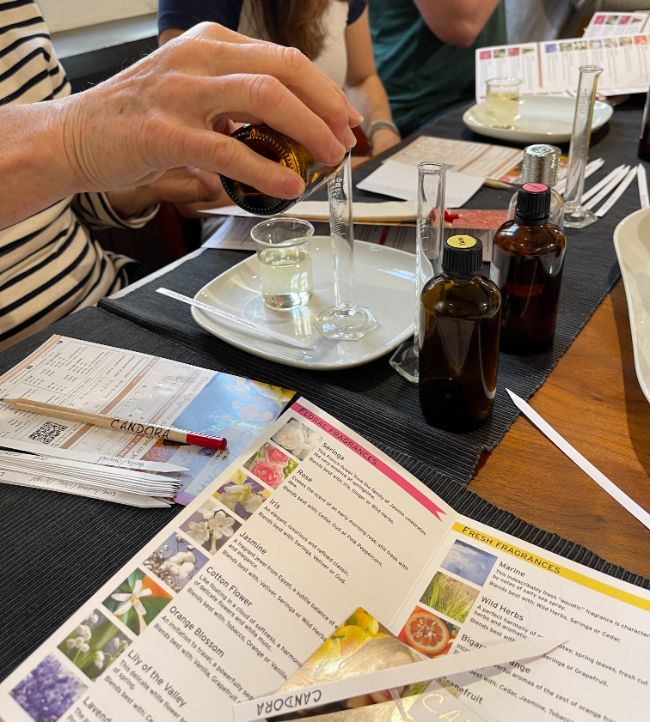
We all became scientists. © Meredith Mullins
If you want to learn more, several perfume workshops are offered in Paris, as well as more information at the Fragonard Museum of Perfume.
The Nose Knows in the World of Wine
“Wine tasting” is a common term for exploring the wonderful world of wine, but it is a bit misleading.
Your nose, as opposed to your mouth, is the precision instrument in the wine world. When you smell the wine, you get a detailed picture of its personality. Smelling a wine is “seeing” the flavors whereas tasting it is more like feeling its essence unfold. About 80% of how something tastes comes from its aroma.
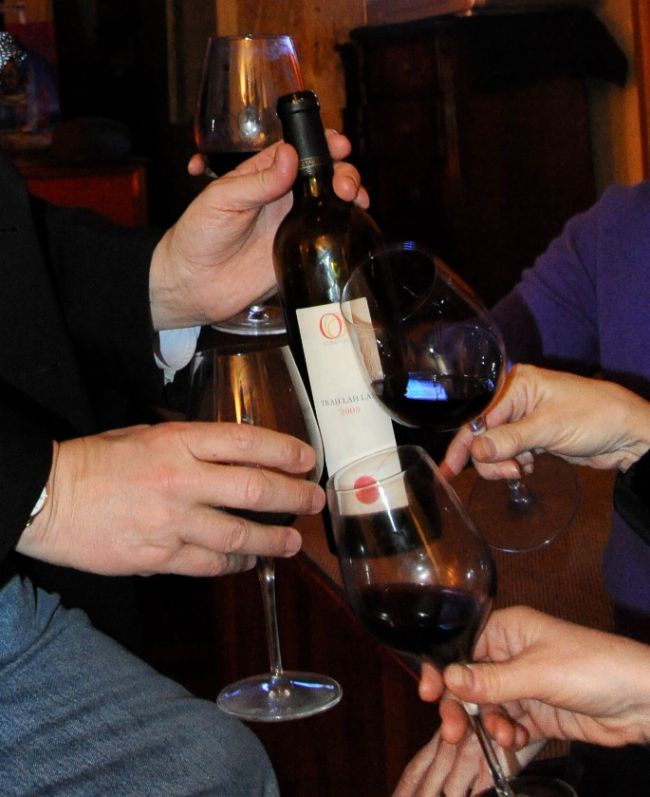
The sensory pleasure and camaraderie of wine tasting. © Meredith Mullins
Wine is not that much different from perfume when thinking about the sense of smell. There are aroma families as well as notes that speak loudly and notes that are shy, subtle, and ever changing. There are levels similar to the scent pyramid of perfume. In wine, these are called primary, secondary, and tertiary aromatic levels — all lending to the mysterious complexity of this sensory pleasure.
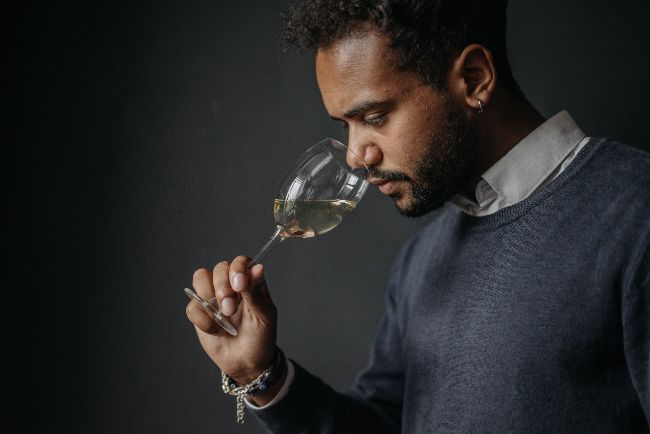
Plunge your nose deep into the glass to “see” the wine’s personality. Photo courtesy of Pavel Danilyuk.
With wine, it is best to begin by experiencing the aromas. Whether you inhale deeply or take a few brief sniffs, don’t be afraid to plunge your nose into the glass (after all, it’s called “nosing” these days). How do you describe the bouquet?
Cherries or blackberries? Slate or ash? Barnyard or forest floor? Cedar or hickory? Wet dog or cat pee (yes, these are wine aroma attributes)? Cloves or vanilla? Rosemary or mint?
A sniffpection is a significant part of the sensory experience. And, with wine, the smells change as the wine breathes, adding to the adventure.
Aroma families include fruits, flowers, vegetables, minerals, spices, herbs, woods, animal elements, earth, smoke, and more.
When you hear someone describe a wine with phrases like “mineral florality” or “subtle minty dill pickle tang” or “tightly focused with a beam of Linzer torte, singed iron, and roasted bay leaf,” you might see why some people call this pretension. After all, it’s really about whether you like the wine or not.
The more creative descriptions can bring vivid pictures to mind: “I sense a cigar factory that burned down near a barnyard, as dark fruit and cloves chimed in.”
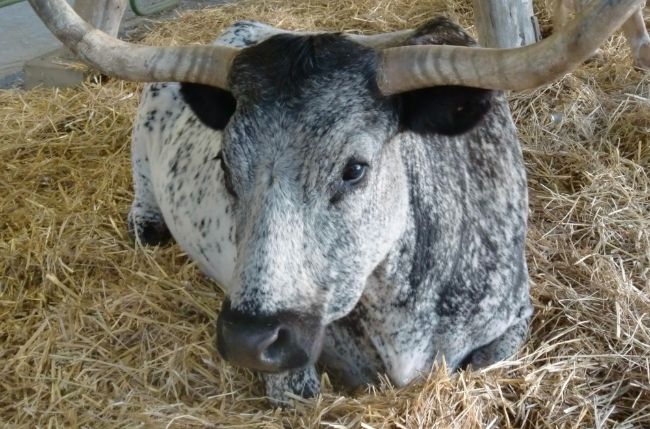
Do I smell barnyard in this Rhone red? © Meredith Mullins
This description of smells is really the best way to describe the wine’s personality. And, often it’s helpful to bring that description into your own set of memories — a wine that smells like Grandma’s house or your ex or your elementary school. This is part of the poetic experience of wine.
The sommeliers who have mastered the art of wine identification, have put these aromas in their scent memory, so that they can recognize not only the grape(s) present in a particular wine, but also the vintage and the producer (with the help of how the wine evolves on the palate). Impressive.
So swirl that glass and plunge your nose deep inside to discover the real personality of the wine. And add your favorites to your sense memory.
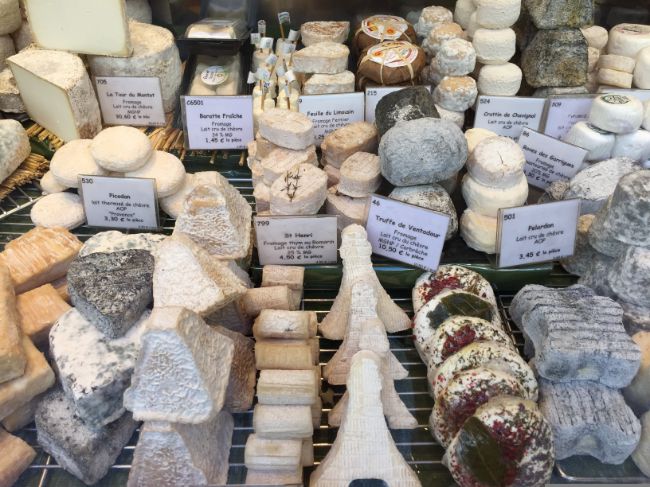
A country with nearly 400 kinds of cheese is scentsational
The World of French Cheese: From Subtlety to Hyperbole
Every one of the nearly 400 cheeses in France has a different aroma — some blatant and some discreet.
Although the bark is often worse than the bite when you walk into a fromagerie, your olfactory senses come alive. Especially with Vieux-Boulogne (beware of cheeses with orange rind) and Pont L’Evêque. It is usually the rind that stinks, not the cheese inside.

Époisses cheese is not allowed on the Paris metro … for stinkobvious reasons. (Photo courtesy of Wikipedia Commons.)
As with perfume and wine, a variety of possibilities exists. The smell of butter and cream, mushrooms, sweet hay, and a hint of dandelion in bloomy rind cheeses. Or the lively mixture of body odor, sour milk, and brandy (with a touch of barnyard) in Trou du Cru (a cousin of Époisses).
It’s good to keep in mind that the cheese often tastes different from its smell. Keep your options open.
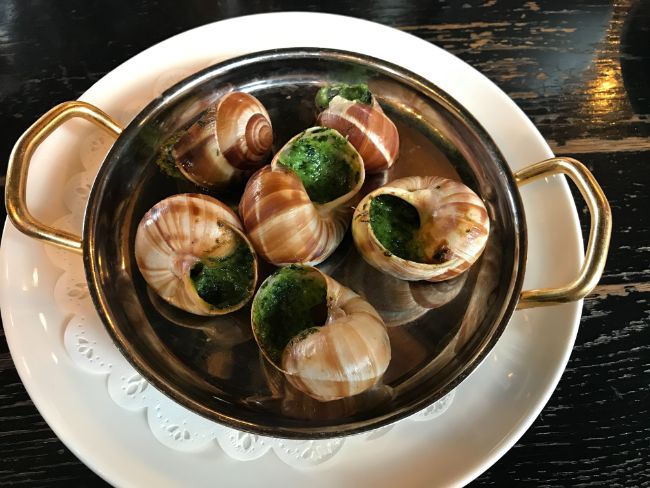
Ah, the aroma of garlic and butter in traditional French escargots. © Meredith Mullins
And French Cuisine?
You may have noticed that I have left out the elephant on the table — the cuisine of France. I will leave this for another time.
I confirm, however, that the aromas of French cuisine deserve to be savored — from the chickens sizzling on street-side rotisseries to the wintery scent of roasted chestnuts to the fresh-baked smells from the boulangeries and pâtisseries in every neighborhood.
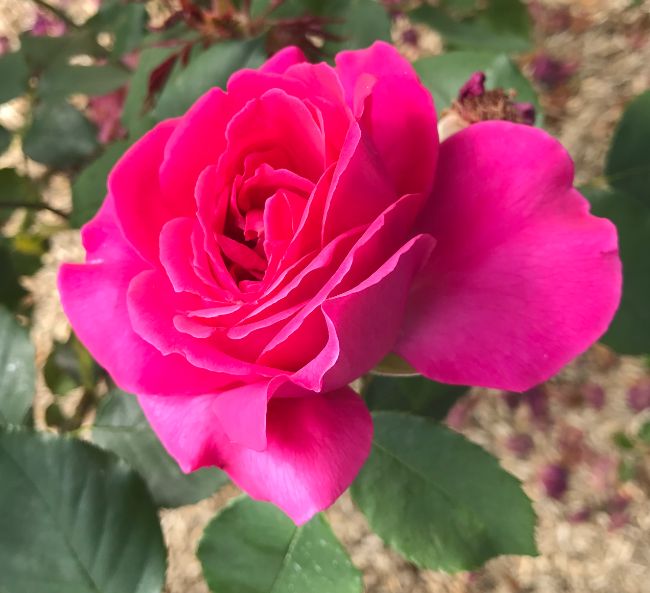
Take time to smell the roses . . . and beyond. © Meredith Mullins
So, take some time to smell the . . . well, everything really. Stroll through Paris and give your nose priority.
And add your favorite Paris smell in the comments section.
Lead photo credit : The Magical Smells of Paris. © Meredith Mullins
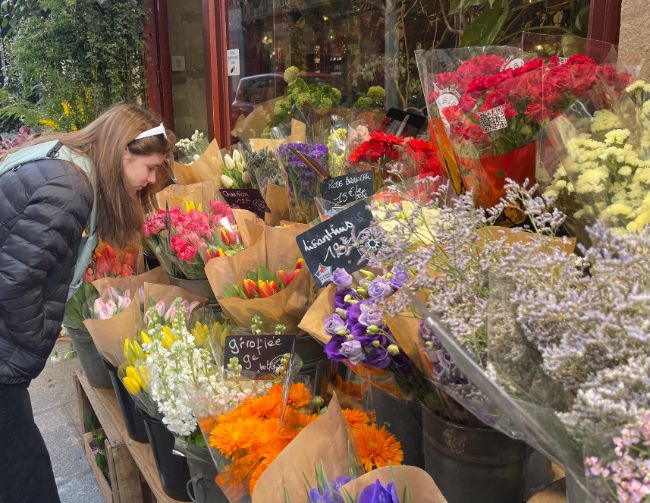
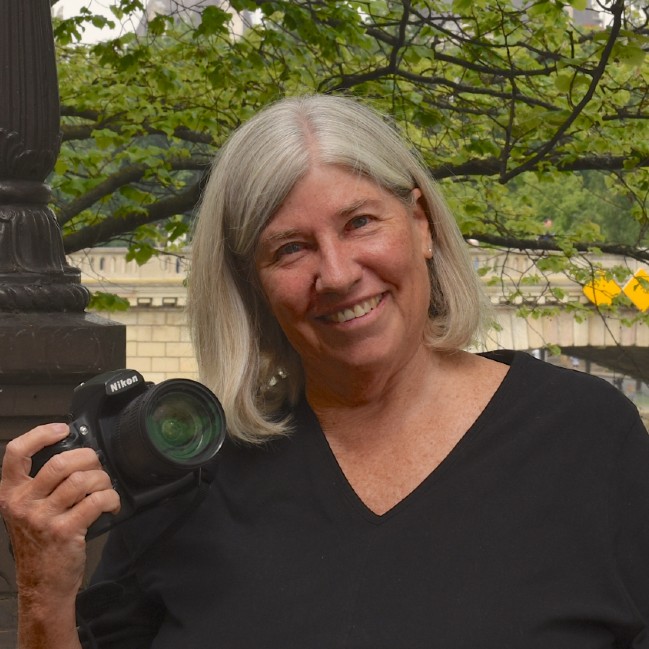

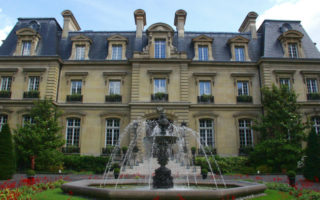

REPLY